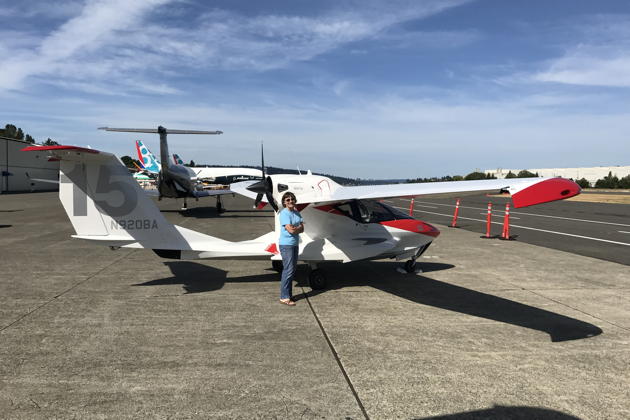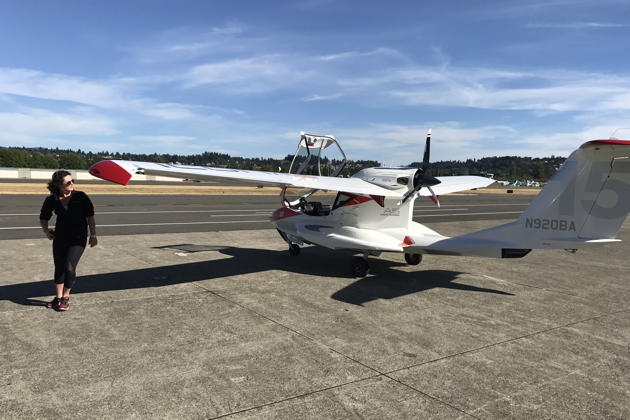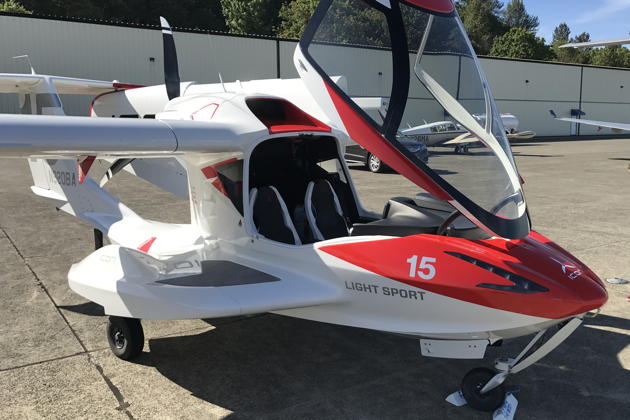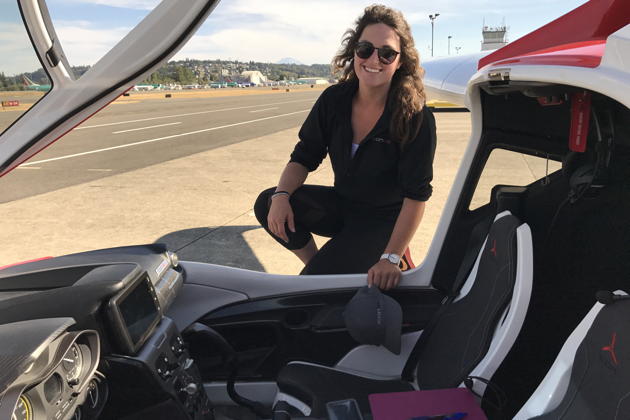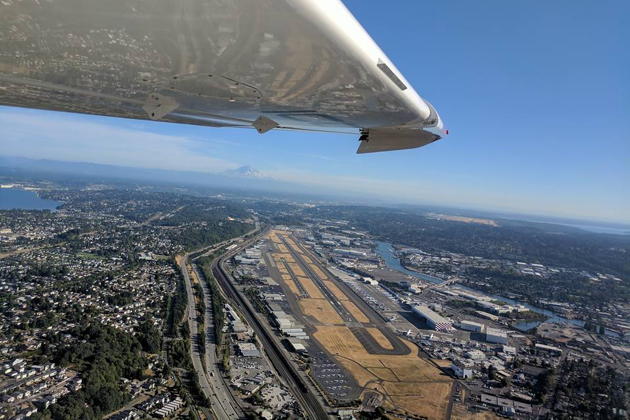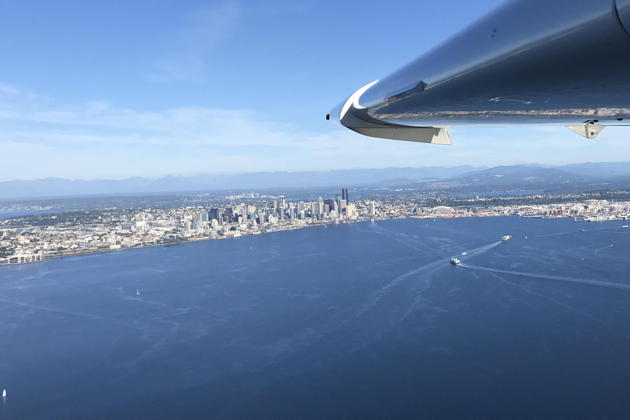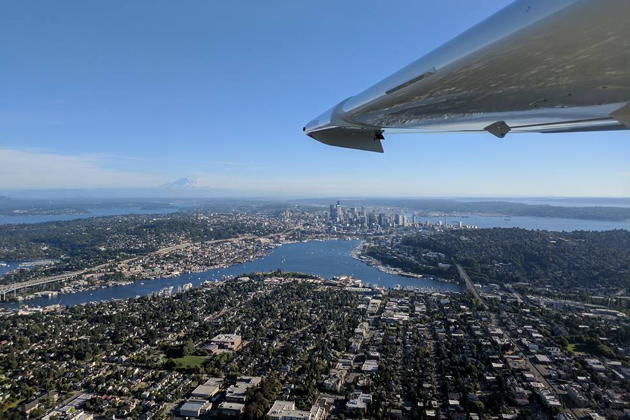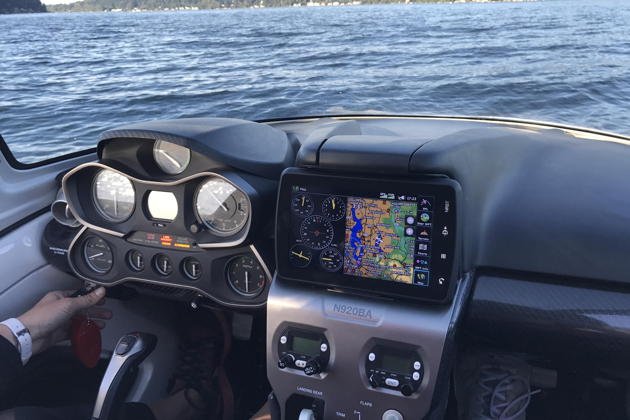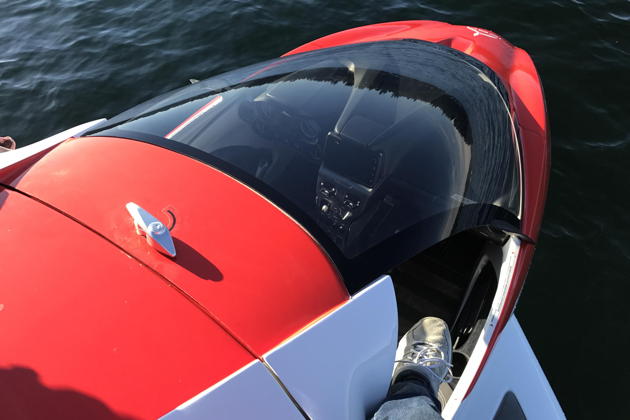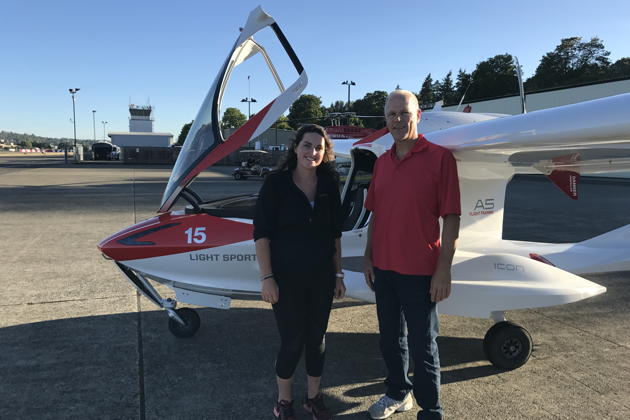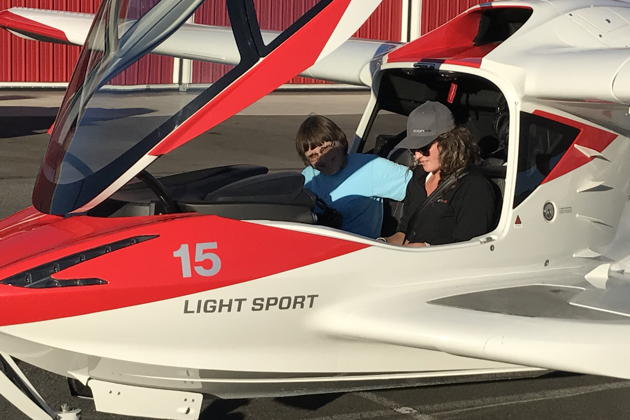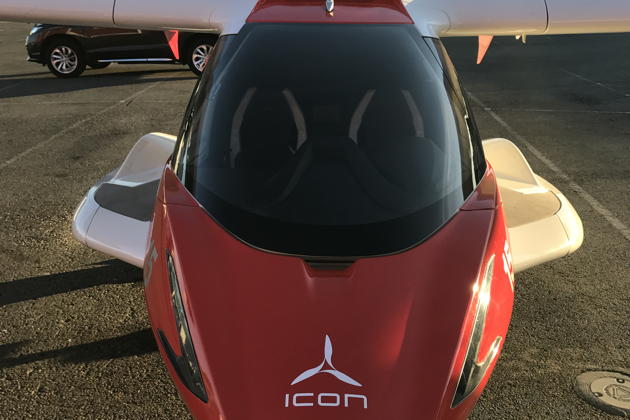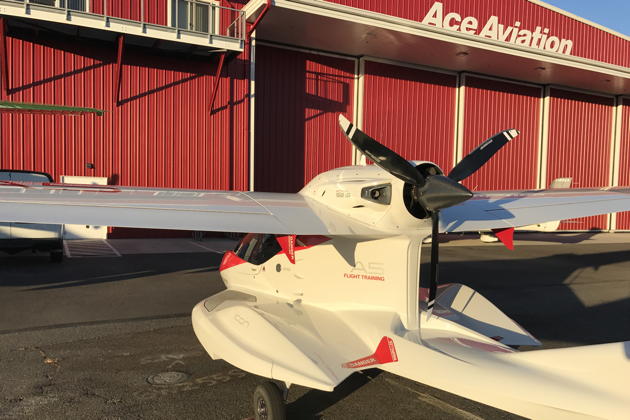FlightLog Archive
∟Aircraft Flown
Flying The Icon A5 - Sep 2017
While taxiing for takeoff at Renton for a Sunday morning flight to Port Townsend, I heard a voice on tower frequency announce "Icon 920BA is Lake Youngs for landing". I wondered if it could be an Icon A5 visiting, since I heard that one was planned to visit the great Northwest for demonstrations. Since we were #3 for takeoff, our timing was good to confirm that it was a visiting Icon A5 as it came down final. I had previously crawled around the Icon A5 at Oshkosh 2015, and had discussions with the design team there. As we took off in our Warrior, I noticed that the Icon pilot asked for taxi instructions to our local Ace Aviation, so I noted that for the future.
After flying back in the early afternoon to Renton, I noticed the Icon A5 parked at the visiting aircraft ramp in front of Pro-Flight Aviation. After tying down the Warrior, we drove by the Pro-Flight ramp to find the Icon A5, sitting next to an amphibious Beaver on floats. The Beaver pilot was looking for the Icon owner/pilot, who walked around the Pro-Flight hangar as we arrived. Macaela Wright, the Icon instructor and demonstration pilot, had just arrived from northern California, and was arranging an Icon flight the next day with the Beaver pilot, who soon headed out in his Beaver. Mary and I got a chance to check out the Icon A5 up close, and talked to Macaela, who noted that she had been hoping for a local area orientation flight today with the Beaver pilot before her demo flights the next few days. The weather was perfect, mid-70s with clear skies, and I volunteered to show Macaela the local area from the Icon A5 vantage point, if she wanted. After a quick check back with the Icon home office, and a signing of a release/demo form, we started briefing for a combined local area orientation and Icon A5 demonstration flight.
Macaela had demonstrated the folding wings on the A5 to the Beaver pilot, so we unfolded and locked the wings in their normal flight position, and conducted a pre-flight walk around. Since the weather was so perfect, Macaela suggested that we remove the side windows and fly semi-open cockpit. I was familiar with the seating and cockpit setup from my earlier Oshkosh discussions, so we strapped in and quickly cranked the fuel-injected Rotax 912iS, which starts just like a car. Given an option on seats, I am most comfortable with a stick in my right hand and a throttle in my left, given my F-15 background, so I gladly settled in the right seat. The A5 uses a castering nosewheel, and Macaela let me get a feel for taxiing, which was straightforward as we headed to runway 34 at Renton.
I planned to give Macaela a local area orientation by crossing over to the Puget Sound, then flying by Seattle and Lake Union, and then dropping into nearby Lake Sammamish for some water landings. The Icon accelerated quite rapidly on takeoff, and we seemed to levitate off the runway, especially given the expansive visibility through the gorgeous front canopy and the open side windows. I cruised just north of Boeing Field as we headed westbound, letting Macaela relax in the left seat and take in the stupendous summer views of the Puget Sound as I maneuvered lightly to get a feel for stick forces. Macaela recommended a cruise power setting of 4900 RPM, and any light stick forces were easily trimmed off using the stick mounted trim switch, which unfortunately is only located on the left seat. I've flow a number of aircraft in the Light Sport category, and the Icon A5 seemed to fly closest to the RV-12, which is a very pleasant flying machine. Control response was very crisp, with easy coordination, and I felt very comfortable after only a few minutes in the air.
We cruised west over the Puget Sound toward Bremerton, then northeast over Alki Point, Ballard Locks and north Seattle, getting great views of Lake Union, downtown Seattle and Mt Rainier in the distance. Wind noise was surprising light, even with the side windows gone, helped by some small wind deflectors that Macaela clipped on the back of the windscreen before we took off. The Icon A5 comes with a Garmin aera 796 mounted in the center console, so we were able to maintain good airspace awareness as we continued east to Lake Sammamish.
As we let down over Lake Sammamish and checked for boat traffic, Macaela discussed the large AoA (Angle of Attack) display prominently mounted in the upper portion of the cockpit left display panel. I've used AoA indicators before in the F-15, and I very much like the information presented, since it provides a clear understanding of how the airplane/wing is flying and where in the flight and stall envelope we are located, regardless of weight, airspeed or center of gravity. The Icon A5 AoA display is outstanding, using easy-to-read green and yellow arcs, with a red stall zone and a 'white line' for optimum AoA performance. We found a wide channel on the south part of the lake that was clear of boats, so Macaela took over, set the throttle for 3000 RPM, and proceeded to descend, reviewing the checklist for water landings, keeping the AoA indicator on the 'white line' in the center of the green arc, and holding that attitude for a surprisingly smooth water landing. That was easy! Macaela shut down the engine, we opened the forward canopy, and jumped up on the wing to savor the beautiful late afternoon experience, now peacefully bobbing in the middle of Lake Sammamish. With ease, we settled back into the cockpit, cranked up the Rotax engine, aligned with an open channel, added power, jumped on the step, and climbed to a reasonable altitude for another approach. Using 3000 RPM and flying the white line on the AoA, I flew two passable approaches and nice landings, surprised both times with the controllability and ease of landing on the water.
As we climbed away from the water on our third takeoff, Macaela took over to demonstrate the aircraft performance in the stalled condition. After gaining a couple of thousand feet over the water, we made a few aggressive tight turns at the top of the green AoA arc, and I felt like I was back in a fighter again, with very impressive turn capability. We then slowed and eased the stick back to place us in the yellow AoA arc, then fully into the red. Even in this stalled condition, we had great control authority, even though our sink rate was quite impressive. By simply easing the back stick pressure and adding power, we were back flying in the green arc almost instantly. The maneuvers were great confidence builders in the performance of the Icon wing and fuselage design, plus the flight control effectiveness.
I took over the flight controls to give Macaela an overview of the local landmarks and approach procedures into Renton, getting to fly the full pattern, approach and landing, again using 3000 RPM and the AoA to fly the hard surface landing, with just some coaching from Macaela to not flare too early, given the low stance of the landing gear. After a nice touchdown, we slowed to a walk in an amazingly short time, easily making the first turnoff.
Since my instructor now had to figure out her parking location at Ace Aviation, I jumped out and let my wife Mary taxi across the field with Macaela, and helped bed the Icon down and have a quick debrief of the flight. I felt extremely comfortable after the short 1.3 hour flight. The Icon A5 flew like - an airplane - a very smooth and responsive, extremely fun airplane. Thank you, Macaela, for the opportunity to try out the A5 and show off the great Northwest from the air, and thank you to the Icon design team for creating such a fun and flyable airplane. Now to work on getting an Icon A5 delivery position...
 KASPRZYK
KASPRZYK